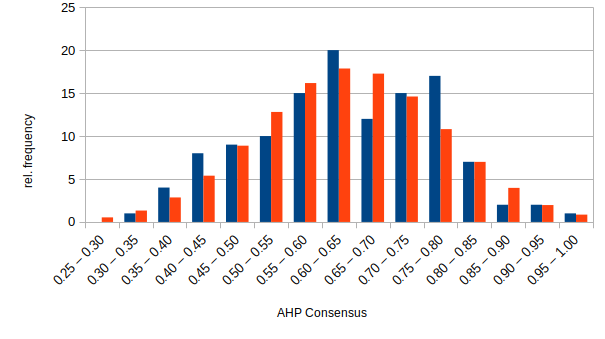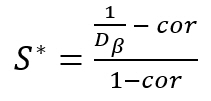To make the results easier to interpret, we define a descriptive word scale for the consensus range from zero to unity. For this we analyzed the consensus within 140 hierarchy nodes (a set of criteria or sub-criteria within a decision hierarchy) of 35 AHP group decision projects. It could be shown (Fig. 1) that the consensus SAHP is normal distributed with a mean value of 64 % ± 3 %. With a 99.5% probability the consensus of all projects lies between 28 % and 99 %. Therefore we divided the range of the scale in four equal segments from 50 % to 100 % (going from ‘low’ to ‘very high’), and defined the consensus for values below 50 % as ‘very low’.
Table 1 Qualitative wording scale for AHP consensus indicator
| Consensus SAHP | < 0.5 | 0.5 – 0.625 | 0.625 – 0.75 | 0. 75 – 0.87.5 | > 0.875 |
| Word Scale | Very low | low | moderate | high | Very high |
Switching from the consensus indicator SAHP to the relative homogeneity S shifts the mean value from 64 % to 70 %, which can be explained by the fact that in AHP we have a limited 1 to 9 scale and Hα,min is a function of the maximum scale value.









 Equation (1.10) is used in the latest updated of the
Equation (1.10) is used in the latest updated of the 